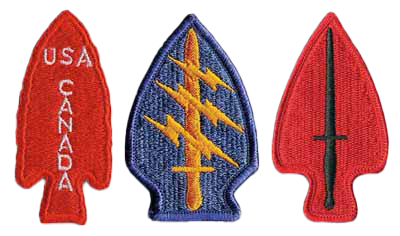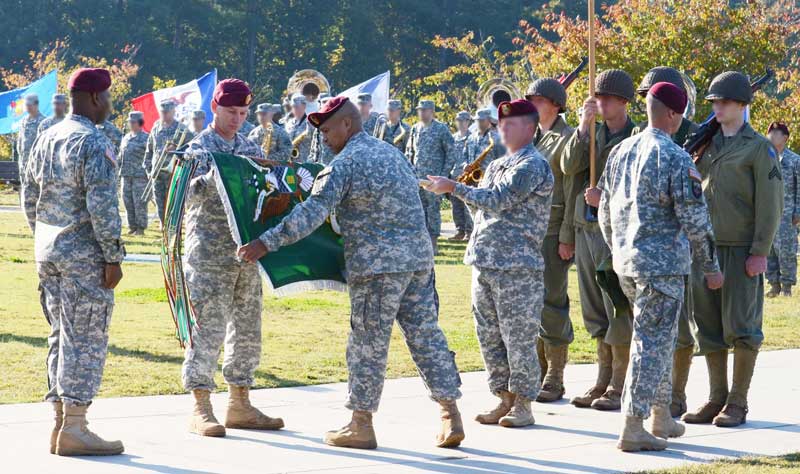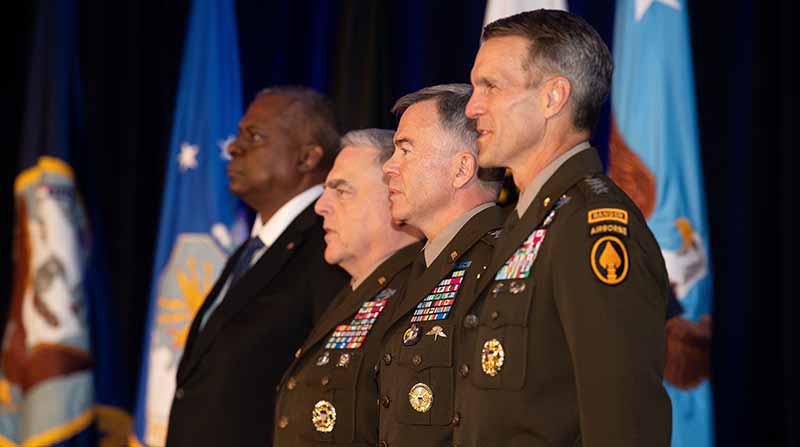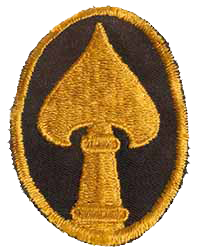When discussing past Army Special Operations Forces (ARSOF) units and functions, words like “lineage” and “legacy” are frequently used interchangeably. Both words signify a connection between present-day units and historical predecessors that contributed to their identity, culture, and esprit de corps. But do the words “lineage” and “legacy” mean the same thing? This short article will clarify the meaning and appropriate usage of each word as they relate to historic relationships between ARSOF units.

Army Regulation (AR) 870-5: Military History: Responsibilities, Policies, and Procedures (September 2021) defines “lineage” as: “The line of descent of an MTOE [Modified Table of Organization and Equipment] unit from its origin, stated in terms of events that have changed its status.”1 Based on this regulatory definition, lineage is an official connection between specific TOE Army units, as recognized by the Department of the Army and managed by the U.S. Army Center of Military History (CMH).2 Therefore, as a general rule, official Army lineage does not apply to or include:
Table of Distribution and Allowances (TDA) organizations (see “TOE and TDA Units” article)
Non-Army organizations (such as sister services, joint commands, or other government agencies)
Mission-specific programs, task forces, or non-units
In some cases, a unit’s lineage begins with its initial constitution and continues to the present day under the same designation. An example of this is the 4th Psychological Operations (PSYOP) Group (POG), a current unit whose lineage begins with its own constitution on 7 November 1967.3 In other cases, the Army assigns a newly activated unit a lineage to a historic TOE unit based on similar functions or name. For example, when the 7th PSYOP Battalion (POB) was activated on 16 October 2011, CMH assigned it lineage to the World War II-era 3rd Mobile Radio Broadcasting Company, a tactical PSYOP unit constituted on 24 December 1943.4

When a unit is assigned lineage to a past TOE unit, it carries with it the honors and campaign credits earned by that predecessor unit. For instance, the World War II-era First Special Service Force (FSSF) is the original parent lineage unit for all Special Forces Groups (SFGs). Therefore, all SFGs now carry the campaign participation credit (CPC) of the specific FSSF element to which they are connected by lineage. For example, the 1st SFG was activated in 1957, but it assumed the lineage of 2nd Company, 1st Battalion, First Regiment, FSSF, so it is entitled to CPC for the Aleutian Islands, Naples-Foggia, Anzio, Rome-Arno, Southern France (with arrowhead), and Rhineland campaigns from World War II.5
“Legacy” is an unofficial term which conveys a current unit’s identification with non-lineal predecessors. This can be based on similar names, functions, or a symbolic connection. Units often recognize certain organizations as part of their legacy for their real or perceived impact on their development, capabilities, identity, and/or esprit de corps. One key legacy element for modern SOF is the World War II Office of Strategic Services (OSS), a joint intelligence and unconventional warfare service that was independent of the Army. Veterans of and lessons learned from the OSS unquestionably contributed to ARSOF training, capabilities, and culture in the post-World War II era, making the OSS an enduring part of the SOF legacy. However, by regulation, the OSS cannot be in the official lineage of any ARSOF TOE unit because it was not an Army organization.6


Unlike lineage, the Army does not prescribe criteria for what constitutes a legacy organization; rather, that is often decided by individual units or unit members. Units may modify their views of what (or who) their legacy is based on evolving missions, designations, or organizational structure. A unit’s lineal predecessors are always part of its legacy, but the inverse is not always true. Below is a chart depicting select U.S. Army Special Operations Command (USASOC) units, their original parent lineage units, and some non-lineage organizations which are generally considered part of their legacies. The list of legacy units is not exhaustive and remains subject to change.
Special Forces
Current Brigade-Level ARSOF Unit
1st, 3rd, 5th, 7th, 10th, 19th, and 20th Special Forces Groups (SFGs), 1st Special Forces Regiment
Original Parent Lineage Unit
First Special Service Force, 5 July 1942
Select Legacy Organizations
- Elements of the OSS (Detachment 101, Operational Groups, Maritime Unit, specific units or programs in the Special Operations Branch) (World War II)
- Philippine Guerrilla Advisors (WWII)
- Alamo Scouts (WWII)
- Eighth U.S. Army Guerrilla Command (Korean War)
- 8240th Army Unit (Korean War)
- UN Partisan Forces, Korea (Korean War)
- UN Partisan Infantry, Korea (Korean War)
- Military Assistance Command, Vietnam – Studies and Observations Group (MACV-SOG) (Vietnam War)
Psychological Operations
Current Brigade-Level ARSOF Unit
4th POG
Original Parent Lineage Unit
Headquarters and Headquarters Company (HHC), 4th POG, 7 November 1967
Select Legacy Organizations
- Psychologic Subsection, War Department (World War I)
- Propaganda Section, G-2-D, American Expeditionary Forces (WWI)
- OSS Morale Operations Branch (WWII)
- 23rd Headquarters Special Troops “Ghost Army” (WWII)
- “Ritchie Boys” (WWII)
Current Brigade-Level ARSOF Unit
8th POG
Original Parent Lineage Unit
HHC, 8th POG, 9 May 2013
Civil Affairs
Current Brigade-Level ARSOF Unit
95th Civil Affairs (CA) Brigade
Original Parent Lineage Unit
95th HHD, Military Government Group, 25 August 1945
Select Legacy Organizations
- Lewis and Clark Expedition (1804-1806)
- Post-Mexican-American War Occupation
- Post-Civil War Reconstruction
- Army of Occupation (Post-WWI)
- OSS Military Government and Civil Affairs activities (WWII)
- Civil Affairs Division (WWII/Post-WWII)
- European Civil Affairs Division (WWII)
- Information Control Division (post-WWII)
- Occupation of Germany/Japan (post-WWII)
- UN Public Health and Welfare Detachment (Korean War)
- UN Civil Assistance Command, Korea (Korean War)
Army Special Operations Aviation
Current Brigade-Level ARSOF Unit
160th Special Operations Aviation Regiment (SOAR)
Original Parent Lineage Unit
160th Aviation Battalion, 1 April 1982
Select Legacy Organizations
- Special Warfare Aviation Detachments (1960s)
- 129th Aviation Company (Vietnam War)
- 281st Assault Helicopter Company (Vietnam War)
- “Guns-A Go-Go” (Vietnam War)
Rangers
Current Brigade-Level ARSOF Unit
75th Ranger Regiment
Original Parent Lineage Unit
1st, 2nd, 3rd, 4th, 5th, and 6th Ranger Battalions, 5307th Composite Unit (Provisional), better known as “Merrill’s Marauders,” and 475th Infantry (Long Range Penetration, Special), various dates (WWII)7
Select Legacy Organizations
- Church’s Rangers (Colonial Era)
- Rogers’ Rangers (Colonial Era)
- Francis Marion, “Swamp Fox” (Revolutionary War)
- MARS Task Force (WWII)
- 1st Raider Company (Korean War)
- Eighth Army Rangers (Korean War)
- Long Range Reconnaissance Patrol Companies (Vietnam War)
ARSOF Support
Current Brigade-Level ARSOF Unit
528th Sustainment Brigade
Original Parent Lineage Unit
528th Quartermaster Service Battalion, 4 December 1942
Select Legacy Organizations
Service Battalion, First Special Service Force (WWII)
